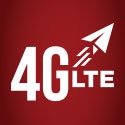
Sequans has been working on LTE Broadcast with mobile operators like Verizon Wireless for the past six months and -- while it only supports LTE chipsets -- it's found a way to extend the technology beyond 4G: home routers.
The chipmaker figures that many consumers have a basic LTE/WiFi router in their home, so it's working with middleware provider Expway to bring LTE Broadcast content to any WiFi-capable device in the home.
LTE Broadcast, also known as Multicast, enables efficient delivery of one video or multimedia stream to multiple users. It's initially being marketed as a way to deliver live sports updates from arenas to those inside or outside the stadium. (See Verizon's Multicast LTE Video to Arrive in 2015.)
Sequans Communications 's platform lets a LTE/WiFi router accept the LTE Broadcast stream and send it to other WiFi devices in the home, so that those consumers at home can view the content on their TV, computer, tablet or other connected device. Craig Miller, Sequans' VP of worldwide marketing, says it basically turns any WiFi device into an LTE device.
For more on mobile topics, peruse the dedicated mobile content page here on Light Reading.
Sequans and Expway have been working together on LTE Broadcast for awhile now. They were both involved in Verizon Wireless 's LTE Multicast demo at the 2014 Super Bowl and Salt SA 's demo at the French Open last summer. Miller says its chips could work on any LTE network, but it's not yet certified for use on AT&T Inc. (NYSE: T), which is also trialing the technology. (See AT&T LTE Broadcast Video Debuts at College Bowl, AT&T Kicks Off LTE Broadcast and Verizon: Multicast Is 'a Year Away'.)
Qualcomm Inc. (Nasdaq: QCOM) and Samsung Corp. also offer chipsets that support the LTE Broadcast technology via evolved Multimedia Broadcast Multicast Service (eMBMS). Qualcomm was the other chipmaker involved in Verizon's trial, and AT&T has yet to name its suppliers. (See Samsung Enhances Its LTE Broadcast Capabilities and Qualcomm Offers an LTE-Broadcast SDK.)
Miller says Sequans chipsets are differentiated from Qualcomm mainly because "they are single-mode, lower cost, lower power, smaller and easier to design in." The vendor is targeting data-centric devices, rather than smartphones, since it is LTE only.
Miller suggests this mode of content delivery via routers can improve the business case for LTE broadcast by increasing the number and types of devices that receive the content. Business model has been one thing limiting the use case for LTE Broadcast since any video content a user accepts would quickly eat up a data plan. Verizon and AT&T haven't yet delved into how they would account for this -- whether they would charge for the data, use ads to support it or offer it free via subsidies from the content providers, a move which could evoke net neutrality concerns. (See LTE Multicast Gets Liked By Facebook.)
In Sequans and Expway's model, the broadcasted stream would still count against a user's LTE data plan, but any other WiFi device would at least offer more bang for your buck.
"Operators will have different usage plans, and business models, but in this situation, you'd have the LTE data stream coming into the router at whatever the LTE usage plan is, but then routing it from there over WiFi to other devices in the house would not count against the data plan," Miller explains in an email to Light Reading.
— Sarah Thomas, 

 , Editorial Operations Director, Light Reading
, Editorial Operations Director, Light Reading
Read more about:
EuropeAbout the Author(s)
You May Also Like











